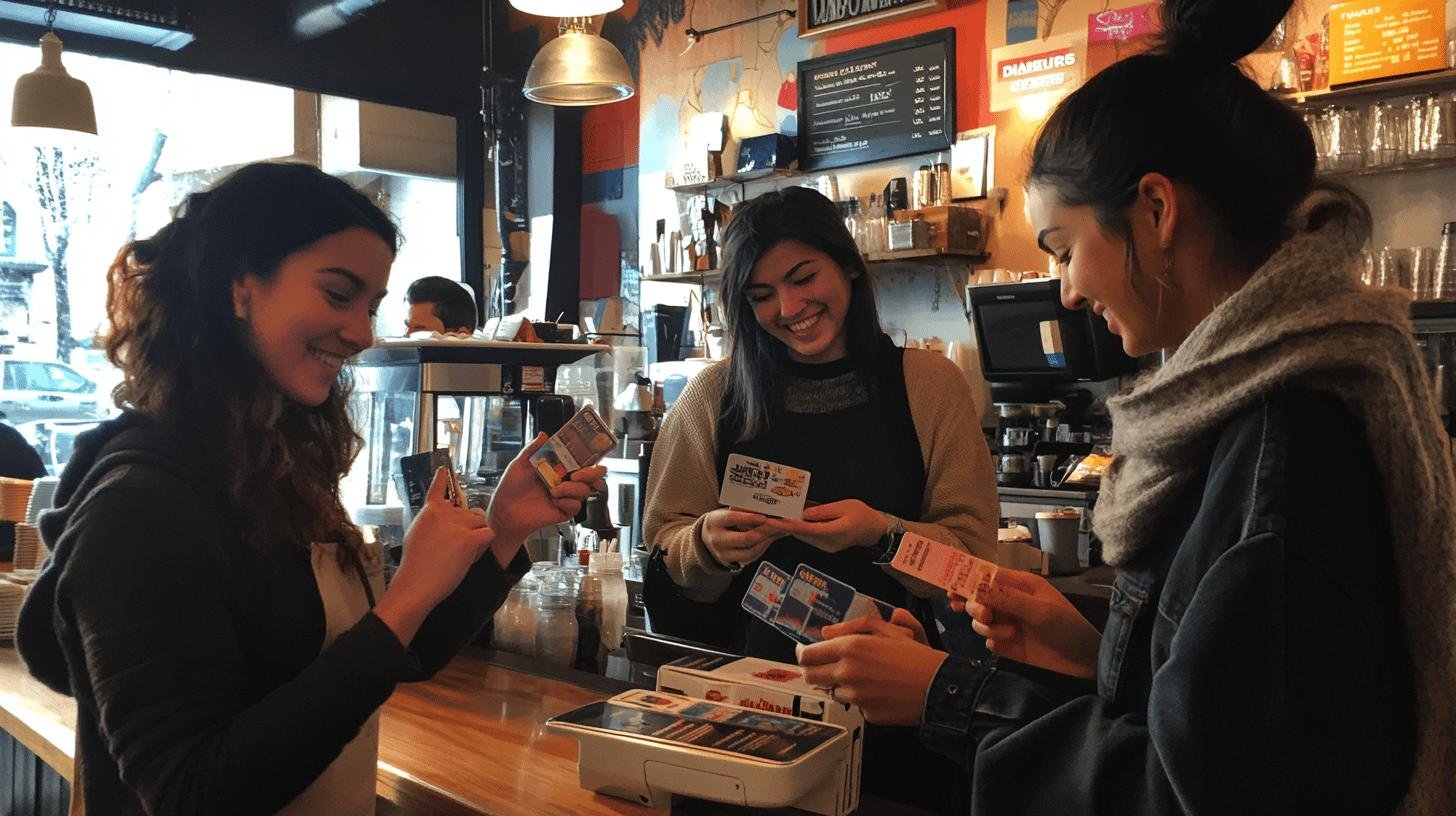TL;DR:
- A reward point system is a customer loyalty program that incentivizes activities like purchases, referrals, and social media interactions.
- Key benefits include increased customer retention, higher sales, and lower marketing costs.
- Strategies for implementation: Set clear goals, offer varied earning options, and adapt rewards based on customer feedback.
- Successful examples: Sephora, Blume Bodycare, and LIVELY.
- Challenges include customer fatigue, high admin costs, and balancing profit with reward value.
- Small businesses can utilize punch cards and email rewards.
- Future trends: Gamification, mobile apps, and data-driven optimizations are enhancing engagement and personalization.
Ever wondered why some customers keep returning to the same brand? While great products and service help, reward point systems play a key role in boosting loyalty. These programs allow customers to earn points for purchases, referrals, and social media interactions, turning loyalty into tangible rewards like discounts, exclusive access, and free items. Both businesses and customers benefit—customers feel valued, and businesses see higher retention and engagement.
Understanding the Reward Point System for Customers
A reward point system is a type of customer loyalty program. It motivates customers by giving them points for various activities. These activities can include making purchases, referring friends, joining promotions, interacting on social media, and writing reviews. The main goal is to drive repeat purchases, build loyalty, and boost brand engagement. When customers earn points, they feel more connected and valued, which can lead to stronger brand loyalty.
The power of a reward point system lies in its ability to make customers feel accomplished and exclusive. As they gather points for rewards, they’re more likely to return to the business. This system encourages customers to interact more with the brand, enhancing their overall satisfaction. In turn, businesses gain a loyal customer base that tends to make repeat purchases.
For businesses, the benefits of a reward point system go beyond customer satisfaction. These programs can lead to more sales and better customer retention. By encouraging repeat purchases, businesses can maintain a steady income. Also, a good rewards program can lower marketing costs, as keeping customers is often cheaper than attracting new ones. This combination of increased sales and cost savings makes reward point systems a compelling strategy for boosting customer loyalty.
- Making purchases
- Referring friends
- Participating in promotions
- Social media interactions
- Writing reviews
Strategies for Implementing a Reward Point System

Start creating your rewards program by setting clear goals. Do you want more sales, better customer retention, or higher engagement? Each goal shapes how your loyalty program operates. Determine which actions earn points and how those points are used. Consider direct purchases, social media shares, or referrals as options.
Offering various ways to earn points keeps customers interested. Choose reward options that fit your brand and appeal to customers, like discounts, exclusive items, or early sales access. Ensure the rewards motivate deeper brand engagement.
- Regularly update rewards
- Personalize offers
- Use customer feedback for improvements
- Monitor engagement metrics
- Adjust point values as needed
Adapting the program over time is crucial for maintaining customer interest. As trends shift, your program should too. Regular updates and adjustments keep it enticing. Listening to customer feedback and analyzing engagement metrics allows businesses to refine their strategies for maximum impact.
Successful Examples of Reward Point Systems
Looking at successful rewards programs helps businesses understand what works. These examples show how a well-planned reward point system can strengthen customer loyalty and engagement.
Sephora’s Beauty Insider
Sephora’s Beauty Insider program boosts loyalty with exclusive rewards and personalized recommendations. Members earn points for purchases, redeemable for beauty products and experiences. This focus on personalization and exclusivity keeps customers returning, enhancing their connection to the brand.
Blume Bodycare’s Blumetopia
Blume Bodycare’s Blumetopia program thrives on simplicity. Customers earn points through purchases and social media interactions. Points can be exchanged for discounts and free products. By keeping the process simple, Blume ensures customer engagement and understanding, building a loyal base appreciative of clear reward systems.
LIVELY’s Tiered Rewards Program
LIVELY engages customers with a tiered rewards program. Customers earn points through purchases, referrals, and social media. Each tier offers benefits like early sale access or exclusive items. This structure motivates ongoing engagement by offering tangible benefits for loyalty. The tiered system rewards and challenges customers to reach higher engagement levels.
These examples highlight personalization, simplicity, and tiered rewards. Each approach builds stronger brand-customer ties. By focusing on these elements, businesses can create successful reward point systems that enhance loyalty and engagement.
Benefits and Challenges of Reward Point Systems

Reward point systems offer several benefits. One major advantage is increased customer retention. Knowing they earn points with each purchase motivates customers to return. This often leads to higher sales, as returning customers tend to spend more. Additionally, these systems boost customer satisfaction by making them feel appreciated and rewarded.
However, challenges exist when managing reward point systems. Key difficulties include:
- Customer fatigue with rewards
- High administrative costs
- Ensuring system security
- Balancing reward value with profitability
Proactive measures are needed to overcome these challenges. Refreshing rewards regularly can prevent customer fatigue. Automating parts of the system can cut administrative costs, streamlining operations. Robust security measures protect customer data, maintaining trust. Calculating reward values carefully ensures they remain appealing without sacrificing profitability. By addressing these issues, businesses can sustain an engaging and effective reward point system.
Optimizing Your Reward Point System for Small Businesses
Why is customer retention vital for small businesses? Keeping existing customers is more cost-effective than acquiring new ones. Retaining customers provides a steady revenue stream and builds a loyal base that supports your brand. Small businesses can maximize resources and strengthen their market position by focusing on retention.
- Punch cards
- Opt-in email rewards
- Referral bonuses
- Loyalty discounts
- VIP membership offers
How can marketing boost reward program participation? By making the program visible and enticing. Use engaging emails and social media to inform customers of benefits. Highlight special promotions or limited-time offers that require points. A clear and simple reward system encourages more customers to join and stay active.
How does feedback integration refine a reward system? Customer feedback gives insights into what works. Use surveys or direct input to gather opinions. Adjust point values, rewards, or earning methods based on feedback. By refining the program based on real experiences, businesses can boost satisfaction and engagement.
Future Trends in Reward Point Systems

How are digital rewards programs evolving? More businesses are using gamification and digital elements to attract customers. Gamification adds excitement by incorporating game-like features such as levels and challenges. This boosts engagement and improves the customer experience. Digital platforms make it simple for businesses to manage these elements and for customers to participate.
- Mobile app-based programs
- Social media-driven engagement
- Real-time rewards tracking
How does data-driven optimization enhance reward effectiveness? By analyzing customer data, businesses can tailor rewards to individual preferences, ensuring higher satisfaction. Data insights help identify popular rewards, allowing companies to adjust offerings. This personalized approach keeps the program relevant and loyal. Continuous data analysis helps refine strategies, ensuring effective and engaging reward point systems over time.
Final Words
Exploring the reward point system for customers reveals its power in customer loyalty and sales growth. Implementing clear goals and varied reward opportunities is vital. It’s crucial to stay adaptive for long-term success.
Highlighting examples like Sephora’s Beauty Insider shows what makes programs stick. Though challenges exist, focusing on strategic management and feedback can keep these systems effective.
Small businesses can benefit by focusing on creative retention strategies. The future lies in digital trends and data-driven insights. Embracing these elements will make any reward point system for customers a key driver of success.
FAQ
How do you create a point-based reward system?
Assign points for actions like purchases and referrals, and offer a variety of ways to redeem those points for rewards.
What makes a good reward scheme?
A successful reward system is easy to use, offers valuable rewards, and personalizes offers based on customer preferences.
Can you provide an example of a successful reward system?
Sephora’s Beauty Insider is a great example, offering personalized recommendations and exclusive rewards that keep customers engaged.
How can small businesses implement a cost-effective reward point system?
Small businesses can start with simple options like punch cards or digital apps. Offering small rewards and using customer feedback helps keep costs low while maintaining engagement.
How do digital platforms enhance reward point systems?
Digital platforms allow real-time point tracking, easy reward redemption, and personalized offers, making the system more accessible and engaging for customers.

